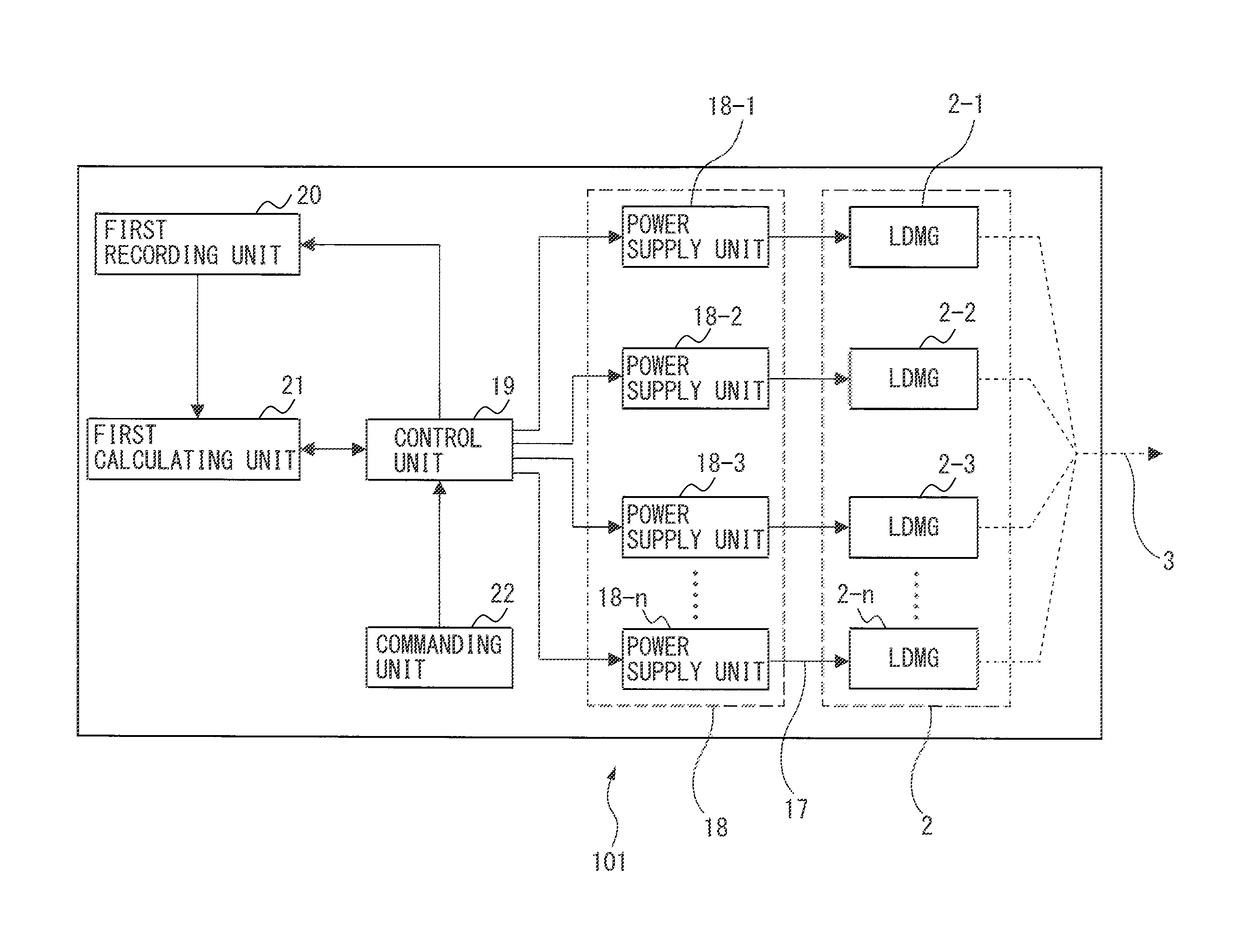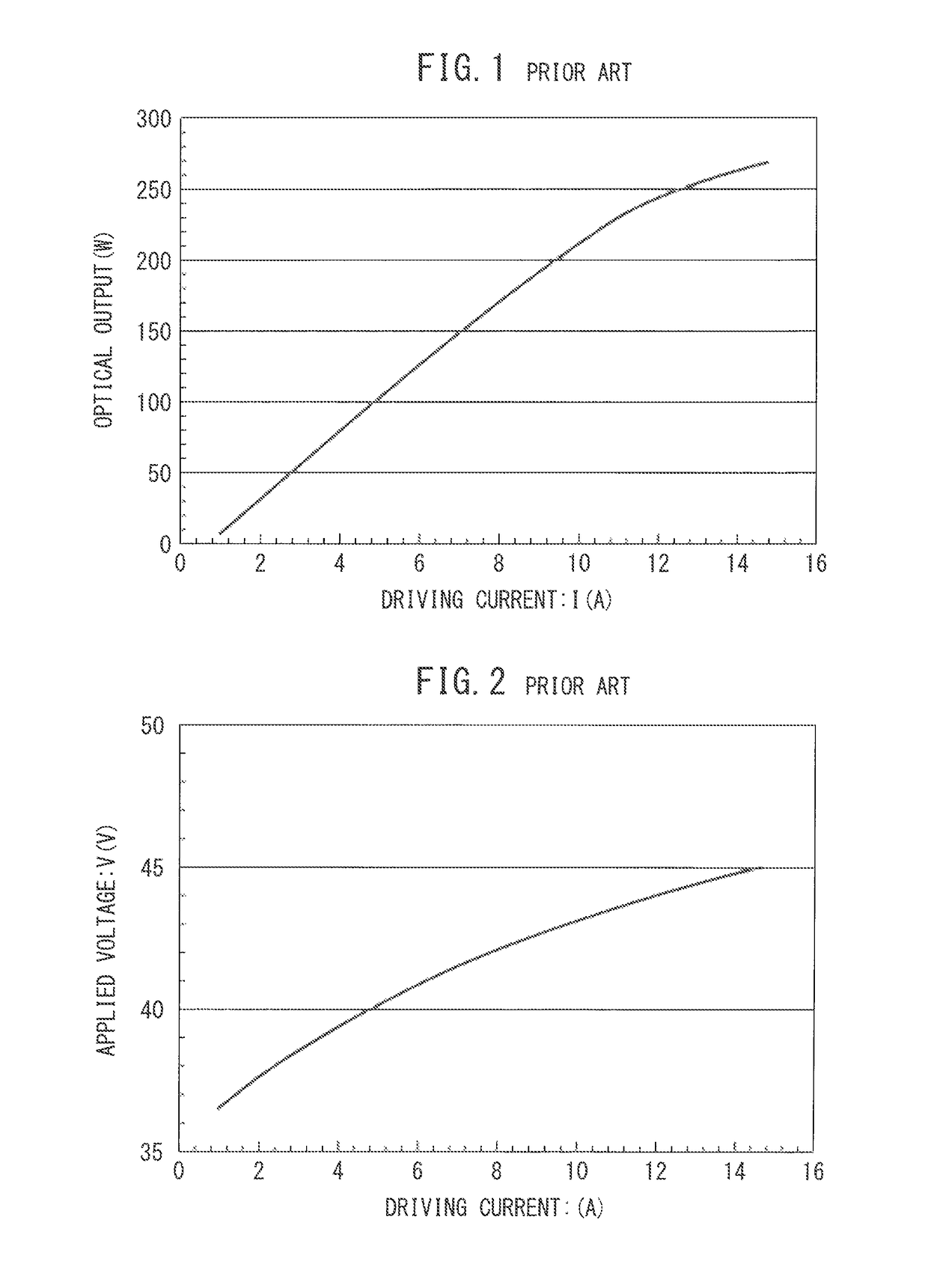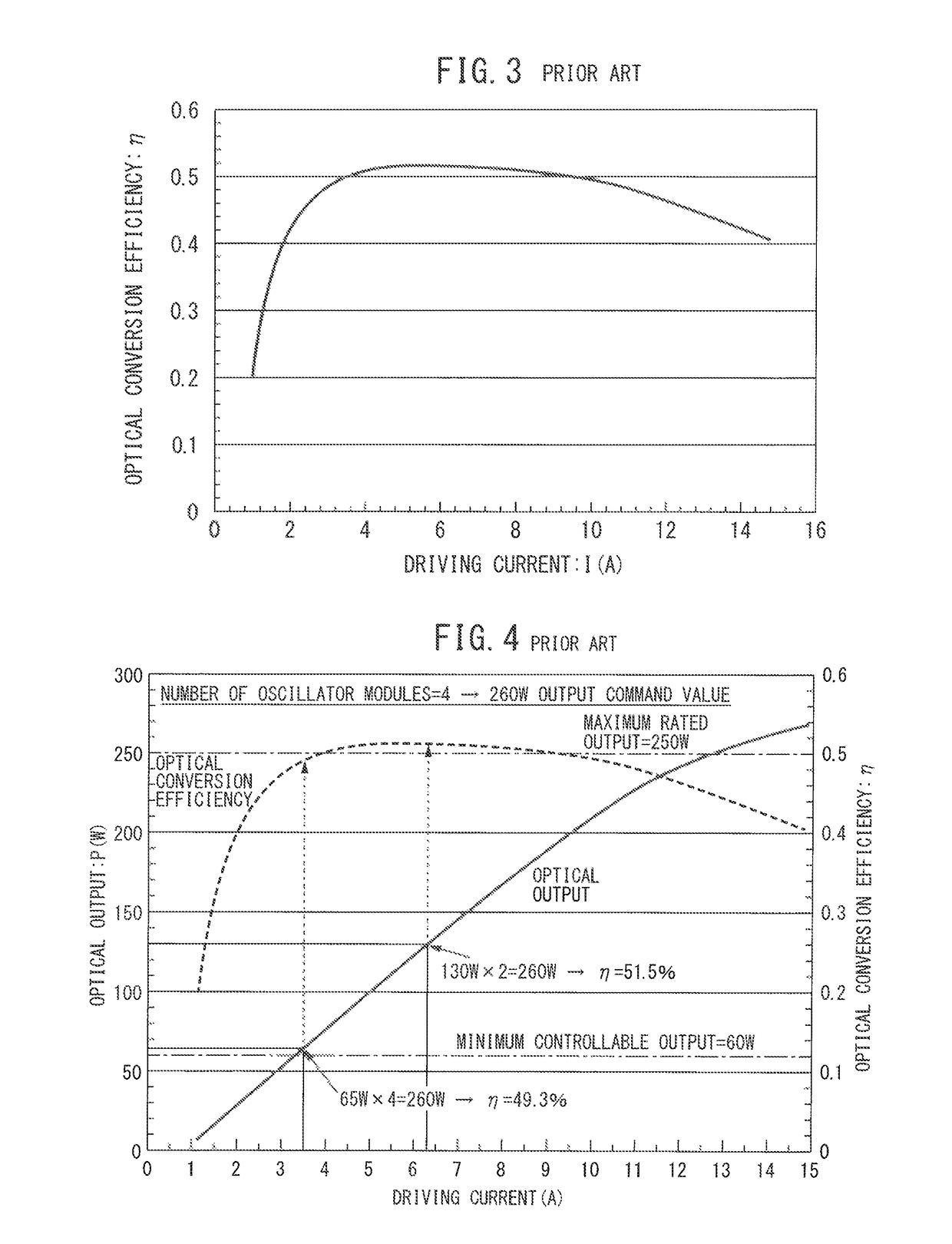Long-life, high-efficiency laser apparatus having plurality of laser diode modules
a laser apparatus and high-efficiency technology, applied in the field of laser apparatus, can solve the problems of reducing the life of the laser apparatus as a whole, not always being able to drive such laser apparatus, etc., and achieve the effect of maximum or substantially maximum electrical to optical conversion efficiency
- Summary
- Abstract
- Description
- Claims
- Application Information
AI Technical Summary
Benefits of technology
Problems solved by technology
Method used
Image
Examples
first embodiment
[0040]FIG. 9 is a schematic diagram showing the configuration of a laser apparatus according to a first embodiment of the present invention. The laser apparatus 101 of the present embodiment is a laser apparatus which includes a plurality of laser diode module groups 2 each containing at least one laser diode module, and a plurality of power supply units 18 each for supplying a driving current to a corresponding one of the plurality of laser diode module groups 2, and which provides a laser light source or a pumping light source for laser oscillation by collecting laser beam 3 from the plurality of laser diode module groups 2. The laser apparatus 101 comprises a driving current supply circuit network 17, a control unit 19, a first recording unit 20, and a first calculating unit 21. The driving current supply circuit network 17 is capable of injecting the driving currents from the plurality of power supply units 18 into the plurality of respective laser diode module groups 2, indepen...
second embodiment
[0050]FIGS. 11A and 11B are diagrams for explaining a laser apparatus according to a second embodiment of the present invention, showing an example of a pulse output command waveform 13 applied to the laser apparatus, an example of a driving current waveform 14 allocated to each individual laser diode module, and an example of an optical output power waveform 15 output from each individual laser diode module. A description will be given for the case where the laser beam output power command 13 to the laser apparatus is a pulse output command such that the optical output power alternates cyclically between a high output power level and a low output power level, as shown in FIGS. 11A and 11B. In this case, the control unit allocates the driving currents to the plurality of respective laser diode module groups so that the plurality of laser diode module groups as a whole can achieve maximum or substantially maximum electrical to optical conversion efficiency under conditions where the ...
third embodiment
[0053]FIG. 12 is a schematic diagram showing the configuration of a laser apparatus for explaining a laser apparatus 102 according to a third embodiment of the present invention.
[0054]The laser apparatus 102 according to the third embodiment of the present invention comprises a second recording unit 23, a second calculating unit 24, and a third recording unit 25. The second recording unit 23 records a data table of an acceleration-deceleration coefficient A(I) for driving-current-related life consumption speed. The acceleration-deceleration coefficient A(I) is obtained by dividing the life expected of the plurality of laser diode module groups 2 when the plurality of laser diode module groups 2 are driven with a standard driving current Is by the life expected of the plurality of laser diode module groups 2 when the plurality of laser diode module groups 2 are driven with a driving current I. The second calculating unit 24 calculates a time-integrated value=∫tatbA(I(t))dt from time ...
PUM
 Login to View More
Login to View More Abstract
Description
Claims
Application Information
 Login to View More
Login to View More - R&D
- Intellectual Property
- Life Sciences
- Materials
- Tech Scout
- Unparalleled Data Quality
- Higher Quality Content
- 60% Fewer Hallucinations
Browse by: Latest US Patents, China's latest patents, Technical Efficacy Thesaurus, Application Domain, Technology Topic, Popular Technical Reports.
© 2025 PatSnap. All rights reserved.Legal|Privacy policy|Modern Slavery Act Transparency Statement|Sitemap|About US| Contact US: help@patsnap.com



